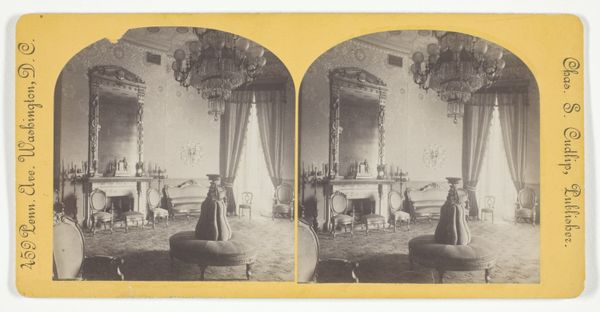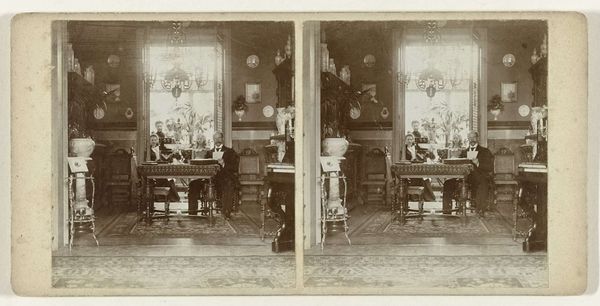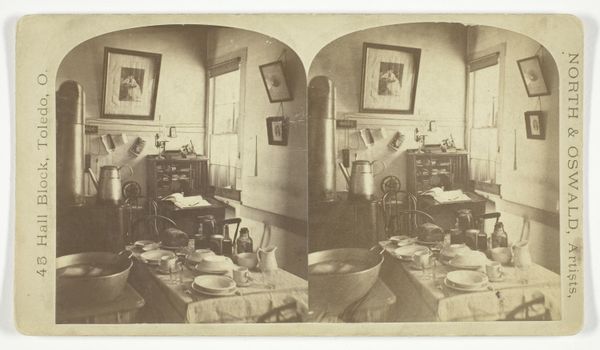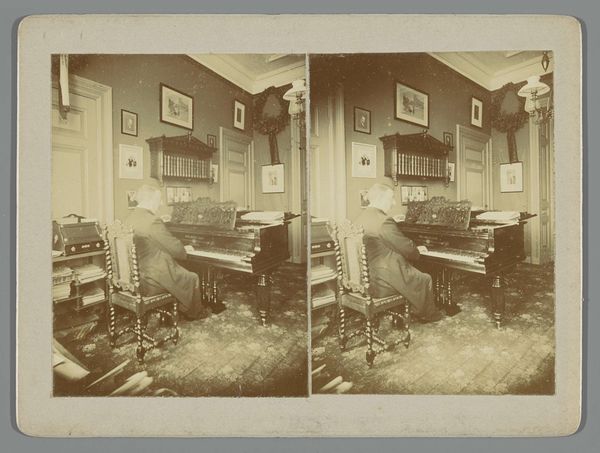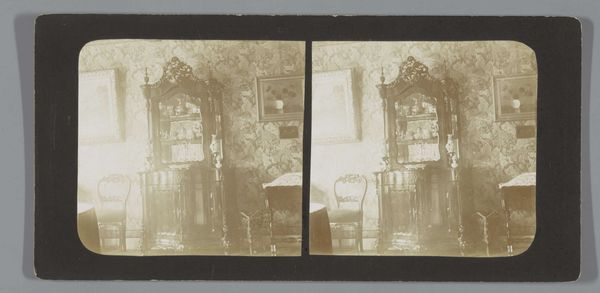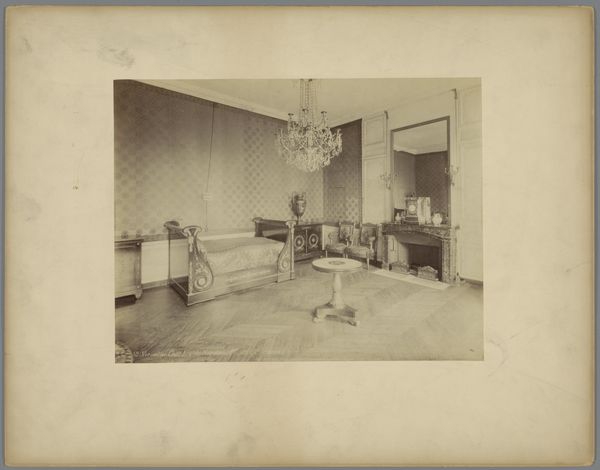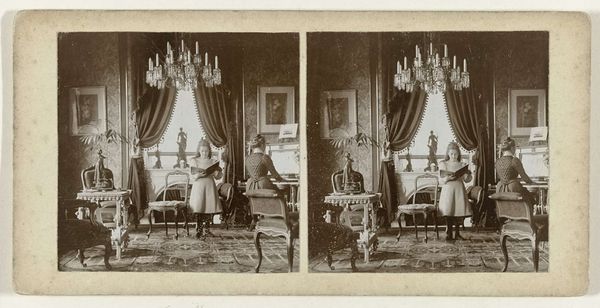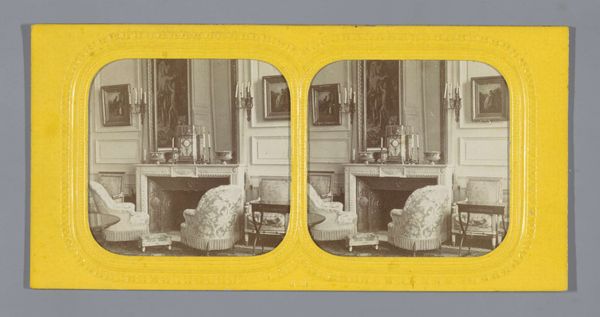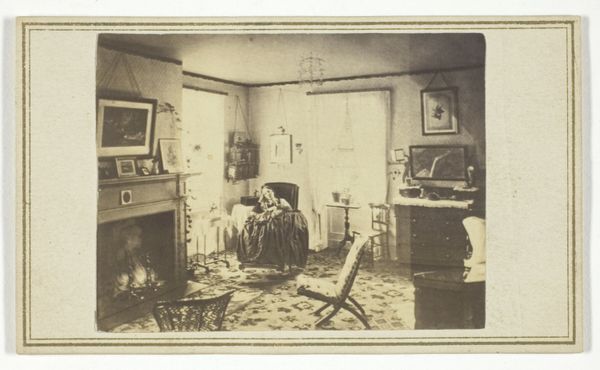
Cornelia Margaretha Scheltema Beduin achter een bureau op haar kamer, Singel 256, Amsterdam Possibly 1899
0:00
0:00
photography
#
portrait
#
sculpture
#
photography
#
realism
Dimensions: height 88 mm, width 180 mm
Copyright: Rijks Museum: Open Domain
Curator: Ah, this one has always intrigued me. What do you think when you first see it? Editor: There’s something inherently sad about it. Despite the soft light and luxurious textures, it evokes a sense of isolation. Like a preserved moment in amber. Curator: This photograph, possibly from 1899, offers us a glimpse into the life of Cornelia Margaretha Scheltema Beduin, captured in her room at Singel 256, Amsterdam. The photographer, Adrianus Scheltema-Beduin, was her brother. It’s remarkable how personal it feels. Editor: The composition emphasizes the interior, almost dwarfing Cornelia. We have this rather traditional portraiture setup, and then, bam, the domestic sphere claims the space, right? I’m thinking of how female identity becomes intrinsically intertwined with the spaces they inhabit, particularly during the 19th century. It's not just her, but the room that tells her story. Curator: Exactly! There’s a palpable sense of lived experience here. And perhaps Adrianus was keen to show us her intellectual pursuits—seated as she is behind that incredible, ornate desk, flooded with light. It begs the question: what stories are she writing? What ideas taking shape? Editor: Or perhaps even, what labor is she forced into, as a result of limited avenues open for her to express? But regardless, I agree; the desk and the room itself function as potent symbols here. But I’m curious about the light—it almost dissolves her figure. I want to look at her, and I can't see much. Curator: It’s a kind of erasure, yes? Perhaps highlighting the limitations of our access to her inner world. Or even hinting at the fleeting nature of the moment, that tension between presence and absence so beautifully inherent in photography. Editor: Perhaps what really touches me about it is knowing this woman and these spaces have receded so far into time. It makes me question what this act of artistic capturing accomplishes in its own right, or what the intentions are, in light of our ability to access such long ago images. Curator: In a way, that’s the very nature of memory, isn't it? A play of light and shadow, clarity and ambiguity. It is our modern impulse to revive Cornelia and make her story worthy once more. This single, silent frame makes us wonder what was real, what could have been, and what will inevitably fade away. Editor: I love how art pushes us to see our lives mirrored in others, even across vast stretches of time. We can now go on to do that again!
Comments
No comments
Be the first to comment and join the conversation on the ultimate creative platform.
